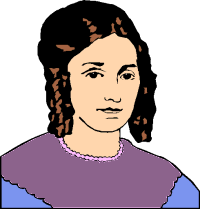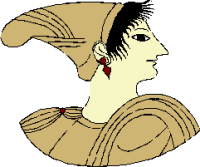 |
Lesson ten
Tradition and the ‘sense of faith’
- * read the narration column
first
- * then do the exercises
|
Read the following chapter in our Textbook, The Ordination of
Women, etc.,
- chapter 6, ‘The Assessment of Believers’, pages
42-47.
|
The existence of
latent Tradition
The Church has always believed that its true Tradition is not
fully expressed in external statements or practices. Tradition also contains
“the gospel which our Lord did not write, but taught by word of mouth and
implanted in people’s hearts, and part of which the evangelists later
wrote down, while much was simply entrusted to the hearts of the
faithful”
(Joseph Ratzinger, ‘On the Interpretation of the
Tridentine Decree on Tradition’, in Revelation and Tradition, by K.
Rahner and J. Ratzinger, Burns & Oates, London 1966, pp. 50-68.) This
Tradition is known as ‘the Gospel in the Heart’.
It is my contention that, throughout the centuries, Catholics
have known, in their heart of hearts and in the marrow of their bones, that
women are equal before God and that there cannot be a fundamental objection to
the ordination of women to the priesthood. This inner conviction was the
‘sensus fidelium’, the Christian sense of faith, the mind of
the Church: Ecclesiae Catholicae sensus, or sometimes consensus
Ecclesiae, remembering that in these last expressions ‘Church’
stands for the whole community of believers. |
| |
|
|

Read more about this in
‘Latent
Tradition’! |
The Characteristics of
Latent Tradition
It is important to note the following about Latent
Tradition:
- Such an inner truth may not be explicitly recognised for a long
time. Cardinal Newman called it the reality and permanence of inward knowledge,
as distinct from explicit confession. “The absence, or partial absence, or
incompleteness of dogmatic statements is no proof of the absence of impressions
or implicit judgments, in the mind of the Church. Even centuries might pass
without the formal expression of a truth, which had been all along the secret
life of millions of faithful souls.”
- The inner truth goes through the typical development of a
living seed. “Tradition is living because it is carried by living
minds—minds living in time. These minds meet with problems or acquire
resources, in time, which lead them to endow Tradition, or the truth it
contains, with the reactions and characteristics of a living thing: adaptation,
reaction, growth and fruitfulness. Tradition is living because it resides in
minds that live by it, in a history which comprises activity, problems, doubts,
opposition, new contributions, and questions that need answering” (Johann
Möhler).
- Tradition is the Church’s growing awareness. Its role in
the Church is similar to that played by awareness in a person’s life:
comprehension and memory, gauge of identity, instinct of what is fitting,
witness and expression of personality. This awareness, however, is special,
because the awareness comes from Christ. It holds data it has received as a
deposit.
|
| |
|
|
Readings:
Exercise
Ask ten of your friends what they think about admitting women to
full spiritual leadership in the Church.
- What reasons do they give for saying ‘yes’ or
‘no’?
- Analyse their answers in the light of this course.
|
Did a ‘Latent
Tradition’ support women priests?
As we examine the history of the Church -- our history as
Christ's believing community --, we discover, underneath the cultural
opposition against women priests, a constant awareness that ran counter to the
officially sanctioned social and cultural ideas. This awareness of women's
capability of Holy Orders has manifested itself in a number of ways:
- Throughout the centuries outstanding men and women have
testified to their awareness of their equality in Christ, implying also a full
share in Christ’s
sacramental priesthood.
- The ordination of women to the full
sacramental diaconate (lessons 3 & 4) implied their openness to all
ordained ministries.
- Throughout the centuries the faithful have had
a devotion to Mary as
priest. They intuitively saw, with their ‘Catholic sense’, that
Mary shared in Jesus' priesthood more than anyone else. Implicitly it contained
the strong, but usually unspoken conviction, that Mary, though a woman, could
easily have been ordained a priest, as much as any man. At times this
conviction is expressed explicitly. See here a
full overview of
documents on Mary Priest on this web site.
- There have been isolated cases of women having been ordained
priests, especially in the South of Italy. ‘As an historian of Christian
antiquity, I need to emphasize that the tradition of the first five to six
centuries has not been so unanimous in condemning the female priesthood as is
usually held’ (George Otranto; read Otranto's
article with introduction by Dr. Mary Ann Rossi or (in shorter form)
Otranto’s lecture).
- For many centuries
St Mary Magdalen
was venerated as a woman saint who had preached (something presumed to be the
sole privilege of priests) and who had even taught the apostles the correct
doctrine when they went astray.
- All sacraments are administered in the name of Christ. But
women administer both the sacrament of baptism and marriage.
Conclusion
The community of believers is only now beginning to study its
own inner history again. There we discover that the conviction that women too
can be admitted to the priesthood has always, somehow, been present in the
Church’s consciousness. |
| |
|











